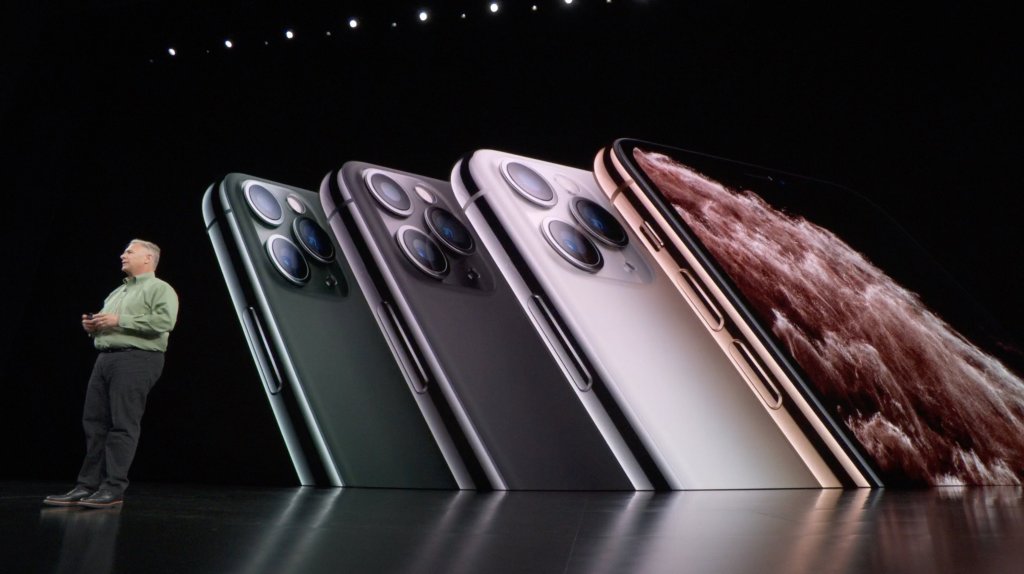The new smartphones didn’t support 5G, the next-generation of wireless networks. They didn’t offer wireless charging, a hotly anticipated feature that would let you charge your AirPods by placing them on the back of an iPhone. They certainly didn’t fold, though perhaps Apple was smart not to go there. And for the most part, the new iPhones looked the same as the models from the year before, and the year before that.
And yet, in all the years that I’ve been reviewing new iPhones, this is the first time I was approached in the real world ahead of their official launch by strangers asking to see the new models. The iPhone 11’s vibrant new colors and the iPhone 11 Pro’s eye-catching (though arguably unattractive) three-camera system on the back helped these products stand out even on the busiest of subway platforms.
This is the contradiction of Apple right now. Even in a year filled with incremental updates — perhaps more incremental than usual — there’s a consumer fascination with seeing and touching and possibly buying the newest iPhone models. It’s why even someone who just bought a new iPhone last year may give serious thought to buying a new model this year. But that doesn’t mean they should.
Yes, the new iPhone 11, iPhone 11 Pro and iPhone 11 Pro Max, which went on sale on Friday, are everything most people would ever want or need in a smartphone, boasting a familiar refrain for Apple devices: faster, smarter, with better cameras and battery life. If you’re due for an upgrade, these models definitely will not disappoint.
However, this year’s updates are probably not enough to lure existing Android users away from devices like the Google Pixel or Samsung Galaxy. And with the 5G iPhone — the true game changer — potentially on the horizon for next year, it’s harder to justify rushing to upgrade to these models if you’re not due for a new device.
The standout: iPhone 11
The big draw of the new collection is actually the base model, the iPhone 11.
The device replaces last year’s best-selling iPhone XR, but costs $50 less and comes with a much better camera. At $699, the iPhone 11 will likely appeal to most people. It offers a lot of the same bells and whistles as the Pro models without the four-figure price tag. The iPhone 11 Pro and the iPhone 11 Pro Max start at $999 and $1,099, respectively.
The iPhone 11 and iPhone 11 Pro and Pro Max internals are nearly identical, touting an A13 bionic chip. On the surface, the iPhone 11 looks and feels a lot like the iPhone XR. It’s made of aluminum and has the same screen as the year before (it still has bezels along the sides, if that sort of thing bothers you). The 6.1-inch size is bigger than the 5.8-inch iPhone 11 Pro and smaller than the 6.5-inch iPhone 11 Pro Max.
The back of the iPhone 11 features a glossy finish; the Pros are more matte. The Pro line comes in gold, silver, space gray and midnight green, a darker, muddier shade than I expected, appearing almost silver or black in some lights. More playful options such as a minty green, creamy yellow and lavender are available on the 11.
Battery life on all models is noticeably longer lasting; during my commute home, I still had a healthy bar of power left across all devices. I’m typically deep into the red zone by the time I leave the office.
A better camera made for the pros
The Pro line features three cameras — an ultra-wide lens, a wide lens and a tele-photo lens — positioned in a square-like fixture on the back of the device. Some critics panned the look, claiming the placement resembles Mickey Mouse ears, and that the square fixture created a slightly raised bump. These quirks didn’t bother me as much as I thought; I eventually forgot about them.
Switching between the wide, ultra wide and tele-photo lens on the Pro phones is easy by tapping a prompt that appears at the bottom of each frame. As I pointed them up toward the new Vessel statue in New York City, I was impressed to catch fine details of what people climbing the structure were wearing several stories up. The ultra-wide lens is particularly fantastic at squeezing more into shots.
Although the iPhone 11 features one less lens on the back — there’s no telephoto camera — for most people, it’s still better than good enough, especially when you consider the price difference. But if you’re all about taking photos and willing to spend a hundred dollars more, the Pros take arguably the best shots you can on any smartphone on the market.
The 11 and the Pros also mostly come with the same camera software. Smart HDR is better on all of the phones; by using machine learning, multiple photos are taken at once and automatically mashed together to get the most optimized shot. Now portrait mode’s facial recognition technology lets you take pictures of your pets. I love it — my cat does not.
Night Mode is a killer new camera feature, allowing users to take shots in super low-light situations. Pictures taken in near darkness now look almost like someone has turned on the lights, which is especially helpful if you’re ever snapping shots at a concert or a dim restaurant. Comparatively, shots taken of me on my iPhone XS without Night Mode were significantly darker. (Google and Samsung’s flagship phones already have this feature.)
Other notables
The Pro line’s new OLED display provides stunning color details and better contrast than the 11, but a quick drop to the bathroom floor mere hours after getting my iPhone 11 Pro Max left part of the screen scratched. It’s my own fault for not having it in a case, but it’s an especially tough blow when you’re spending a minimum of $1,049 for a new device. My iPhone 11, also not in a case, also has a few minor scratches without undergoing any significant falls. (Note to self: always use a case.)
Meanwhile, Dark Mode — already popularized on the Mac — dims wallpaper and the phone’s backdrop, making it easier on the eyes and potentially helping to save on battery life. This is all about personal preference. I didn’t expect to like it as much as I do.
Lastly, Apple is trying to make “slofies” a thing, a new slow motion video feature available via the iPhone 11 and Pro selfie cameras. It’s hard to envision a real use case for this, but it’s a fun way to send slow waves and sassy hair flips to friends.
So should you buy an iPhone 11 or iPhone 11 Pro?
Apple’s new smartphones aren’t groundbreaking — and let’s be honest, there hasn’t been a revolutionary phone in terms of design or capabilities in some time. But they’re just what’s needed to hold people over until next year’s expected 5G iPhone, with great cameras, blazing speed and long-lasting batteries. Those who upgrade will be happy. Those who wait for next year likely will be, too.
The-CNN-Wire & © 2019 Cable News Network, Inc., a Time Warner Company. All rights reserved.
& © 2019 Cable News Network, Inc., a Time Warner Company. All rights reserved.










